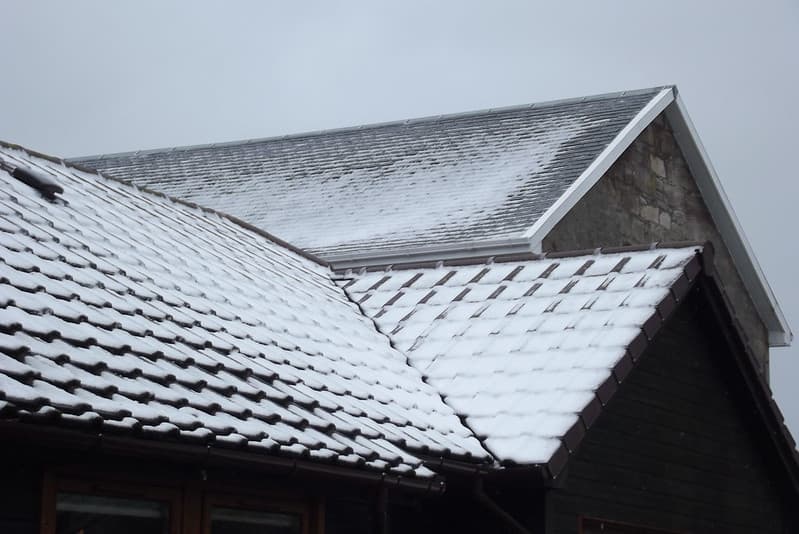Are you looking for a contractor?
Submit our quick form and get quotes now!
How to install a window air conditioner
By Editorial Team
Updated on November 7, 2023

It can’t be denied that the summer season is enjoyable for almost everyone, with hot days and warm nights that can finally be spent outside. But sometimes, the temperatures reach a peak and joy slowly moves towards discomfort. Luckily, technology has allowed for the air conditioner.
This useful appliance cools us down when we are overheated, and allows us to sleep through those blistering summer evenings. One of the most popular units for a house or apartment is the window air conditioner.
However, installing an AC unit isn’t simply about just slipping it into a window and calling it a day. There are a few steps that must be followed to have a nice breeze blowing into your living room, bedroom or kitchen. If you’re melting in this heat, and are considering a window AC unit, read on for our step-by-step guide of the installation process.
How to install a window AC unit!
Preparation

Make sure to select a window close enough to an outlet, as most AC units have a power cord that reaches no more than 6 feet. Next, gather all of the tools you will require for this project, including a screwdriver, measuring tape, as well as all the small pieces that will come alongside the air conditioner, and these will be screws and brackets.
Another important aspect of installing a window AC unit is taking the right measurements. Unfortunately, one of the most common problems when installing a window unit is choosing the wrong size, and thus, the unit cannot be accommodated.
Choosing the proper size means two things: the first is having a unit that fits correctly and snuggly into your window, and the second is having a unit that operates at the correct cooling capacity for the room or space. A unit that is placed in a room with lofty ceilings or direct sunlight will need a larger capacity, or it will be overworking.
Further, a smaller unit running in a smaller room will perform more efficiently than a large unit running in a small room, as the larger unit will continually turn itself on and off to correctly cool the room. Thus, it is important to bear this in mind when choosing the right unit for your home.
Also worth considering is how you plan to fill the space around the air conditioner, as it will need to be properly insulated to do a successful job. Some units come equipped with insulating foam, but if yours doesn’t happen to have it included, make sure to have insulating foam on hand in case there happens to be a space between the window and the unit.
Getting started
Start by removing your AC unit from the box in which it has arrived, making sure to be extra careful when picking it up as the back of the unit can be extra sharp. Following the removal of the unit from the box, check to make sure that all the necessary parts were sent with the unit.
Next, measure the length of your window and mark the center with a pencil, as this will make the installation process much easier in that it will ensure the side panels reach both sides of the windows evenly.
Following this, open the window to prepare it for the installation process. First, if the manufacturers have included weather-stripping, this would be the time to install it. As we stated in the preparation section of this article, you want to avoid any cracks between the window and the unit itself, and weather-stripping will aid in this aim. If weather-stripping hasn’t been included, you’ll want to use insulating foam, but this will be installed following the unit.
Install the unit
Before slipping the unit into place, you’ll have to install its side panels. This can be completed by sliding the panels into the appropriate place on the unit itself and then securing the panels in place with the screws that have been provided.
Make sure that screws are tightly fastened to be certain that there are no gaps within the unit, as gaps will allow for warm air, allergens as well as other forms of pollution to seep into your home. The next step will involve inserting the unit into your wall, and this should be completed by two people. Even if you’re capable of lifting the unit yourself, it’s much safer to have an extra set of hands available.
Pick up the unit and make sure it is centred in the window, then close your window tightly directly over the unit, now the AC unit should slide into place. Make sure that most of the weight is outside of the window, and once the window has been closed, the AC should sit securely in place.
Install brackets and attach panels

Now that the AC unit is in the window, the hard part is over. The final steps will be simply securing the unit into place. Although the steps for securing the air conditioner in place will vary between manufacturers, most AC units will include at least one L bracket.
To secure this, simply screw it into the top of the open window, as the L bracket’s purpose will serve to keep the window from being pushed up, which is one of the main concerns regarding window air conditioners. If the unit you’ve chosen doesn’t come with a bracket, it is recommended that you install one as described.
Following the L-bracket installation, add window padding alongside the AC unit. If your unit does not include window padding, make sure that the side panels extend to reach the window. Once the side panels have been extended, attach them with screws to the window frame and sill.
If any other measures of securing the unit in place have been provided, put these into place. Now, you’re done aside from turning the unit on and enjoying the gratifications of a newly installed unit.
What price does it cost for a window air conditioner?

For a horizontal air conditioner, you will have to pay at least $150 to $360. Its power will vary between 5,000 and 12,000 Btu/h and more. Vertical air conditioners, on the other hand, require an investment of at least $480, which is more expensive than horizontal models. On the other hand, their power level starts at a higher level, starting at 8000 Btu/h.
For example, a 5000 Btu/h unit is well suited to air conditioning with an area of 150 to 200 square feet (about the size of a master bedroom). For an area of 500 square feet, you should opt for a 10,000 Btu/h device.
Click here to learn more about the average price of different types of air conditioners.
Get 3 renovation quotes for your air conditioner window unit renovation project
RenoQuotes.com can help you get quotes for your AC window unit project. By submitting your project to us, we’ll put you in contact with top-rated contractors. Fill in the form on the homepage (it only takes a few minutes), and you will get estimates from trusted professionals.
Dial 1-844 828-1588 to speak with one of our customer service representatives.
Looking for something else?
Related articles
The latest industry news, interviews, technologies, and resources.

Léa Plourde-Archer
•03 Feb 2025
A home extension or addition is a significant upgrade that can add value and square footage to your property. However, what questions should you ask to ensure your project is executed flawlessly? How can you ensure the extension or addition blends with the rest of your house’s style? What should you know about materials, building permits, and associated costs?

Editorial Team
•07 Nov 2023
Owning a rental apartment is not without challenges to overcome, as it comes with a number of obligations and responsibilities, which aren’t easy to maintain.

Amanda Harvey
•27 Nov 2024
As the spring approaches, homeowners are beginning to consider inventive ways to update the outdoor features of their property. As the entrance to your home, the driveway is an important facet as the introduction of your humble abode: it sets the mood, welcomes guests and, following a long day at work, grants you access to all your favourite things.

Cynthia Pigeon
•07 Nov 2023
When it comes to re-roofing, your main concerns are likely to be preventing future water infiltration and choosing a durable coating.

Editorial Team
•31 Mar 2025
The COVID-19 pandemic profoundly impacted the global economy, and the construction industry wasn’t spared. One of the most significant outcomes was the instability of lumber prices. Where does it stand today? In 2025, lumber prices are more stable than in 2021. What factors have driven this recent stability, and what were the underlying causes of past fluctuations?